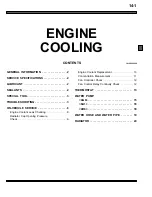
EN
31
Malfunctions
This section lists a number of malfunctions which may occur.
SURGE OVERLOAD ALARM
The motor’s current drawdown has increased very quickly
EOL
1. The gate has struck an obstacle.
2. Friction on runners or rack (see motor current [A]).
SAFETY EDGE ALARM
The control unit has received a signal from the safety edge
EED
1. The safety edge has been pressed.
2. The safety edge is not connected correctly.
LIMIT SWITCH ALARM
The limit switches are not working properly
ELS
1. The limit switches are damaged.
2. The limit switches are not connected.
3. Check the travel time which has passed without tripping of the limit switches.
PHOTOCELL ALARM/SAFETY EDGE
Phototest fail outcome.
EPH
1. Check the photocell and the safety edge connections.
2. Check that the photocells and the safety edg are operating correctly.
After eliminating the cause of the alarm, to delete all errors simply press the “DOWN -” button or press the SBS (STEPPING) command.
The display returns to the normal screen.
Press “UP“ to read the following parameters on display.
DISPLAY
MEANING
Status display
(
--
,
OP
,
CL
,
SO
,
ecc..)
Description of the control unit (--, OP, CL, SO, ecc..)
Maneuvers performed
Counter displays alternating the thousands (without dots) and the units (with dots).
Motor current [A]
Current absorbed by the motor
The first time the control unit is powered up, an autolearning procedure must be carried out to acquire fundamental parameters such as
the travel stroke length and deceleration points.
All the main parameters are set with the default settings by the control unit. To customise the installation, proceed as described in point
4.5 below.
4.8 - Autolearning of the travel stroke
AUTOLEARNING OF THE TRAVEL STROKE AND MAIN PARAMETERS
The decelerations will be those set in the menu, with the same percentage during both opening and
closing.
1. Release the gate or door, move it onto the central position and lock it in place again.
MENU
SBS
DOWN
UP
--
2. Hold down the + and MENU buttons SIMULTANEOUSLY for more than 5 seconds, until the screen
shows LOP and get ready to press the DOWN button (see illustration) if necessary.
3. If the first operation is NOT opening of the gate, press the DOWN button to stop the autolearning.
Then press SBS to restart the acquisition: the gate starts moving again, in the right direction. The motor
opens the gate at low speed to the opening limit switch. On reaching the opening limit switch, the gate
restarts in the closing direction at low speed until it reaches the closing limit switch, displaying LCL.
4. Perform a number of opening, closing and sudden stop commands to ensure that the system is solid
with no assembly defects.
















































